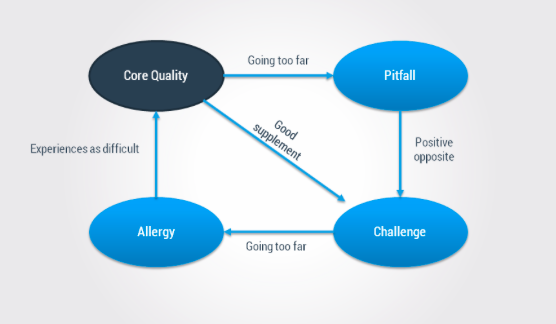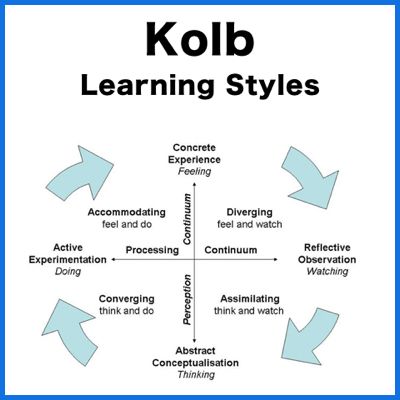The world is restless and chaotic. How do you deal with that without losing yourself?

Unrest is the new norm
The world has been restless for decades, of course, especially if you regularly check the news. But two foundations under our societies are changing faster and faster: technology and ecology.
Technology is improving at an exponential rate – the ecology is actually deteriorating faster and more visibly.
It creates a lot of turmoil in the world – and then in ourselves . Because the acceleration of these two factors, among others, leads to enormous economic and geopolitical changes and crises that we see unfolding before our eyes.
Violent developments seem to follow each other in rapid succession. It sometimes feels like we’ll never get ‘a break’ from just living our lives.
We are no longer in an era of change but in a change of era .
We have left the relatively stable ‘post-war’ world behind us. We are now well on our way to a new balance. And in the meantime we experience chaos, turmoil and uncertainty .
Exciting – even scary at times – and incredibly insecure. What do we do with that?

1. Bring it back to yourself
No matter what’s happening in the world – you still have to load the dishwasher. And as far as I’m concerned, this is a great way to look at the situation.
You usually have virtually no control over world events . We are here with billions of people of which you are only one.
What can you do about a pandemic? What can you do about wars, about climate change?
There are always steps you can (and maybe should) take. But your influence is always limited. And it’s important to realize that.
You don’t have to save the world . And you can’t save the world. It’s not just your world – it belongs to all of us. It is therefore also our joint responsibility.
What can you do if you feel overwhelmed by world events? Here are things that work well for me – and many blogzynergy.com readers:
- Stop constantly checking the news and social media. This prevents your brain from endlessly ‘chewing’ on issues that your brain can’t possibly solve. This reduces the feeling of restlessness, stress and powerlessness.
- Rather choose to take the state of affairs in one go with some regularity. For example, by reading one newspaper or watching the news once.
- Write in your journal about the things that make you restless. Write your thoughts on paper and describe your feelings. That way they don’t keep circulating in your head all the time.
- Also immediately write down all the little things you are grateful for . That immediately gives more shine to your day.
- Take a moment to “be mindful” of your feelings of insecurity, fear, and anxiety. Observe the sensation in your body without changing anything. Just let this feeling last for a while without running away. This gives the unrest the opportunity to ‘burn out’, after which you immediately feel calmer.
- Investigate which practical steps you can actually take to make the situation better or less undesirable . Such as making your lifestyle more sustainable, cultivating compassion and taking the necessary measures.
- Focus your attention on taking those steps. Action reduces anxiety . Do what needs to be done and you’ll feel better right away.
- Practice rational fatalism . What has happened cannot be undone – even if it should never have happened. It is what it is – even if you mentally resist it. Fighting reality is always stressful . By accepting the current situation, you create a new starting point from which you can take your next step.
- Try to focus your attention on the moment. Practice mindfulness , meditate, exercise, seek distraction. Do you tend to worry a lot? Then opt for physical activities. Such as working in the garden, cleaning, tidying up or helping someone else in the house.
Breathe in slowly and relax completely. The restlessness of the world need not make you restless . It is possible and allowed, but it is not necessary. You don’t control what happens around you – but you can control how you deal with it.
By making it clear to yourself what you do have control over, you will quickly reduce anxiety. Make your world smaller again and focus on practical steps.
2. Stay close to yourself
What do you think is important? Which values would you like to ‘live’? What do you want to stand for?
When we feel anxious, we quickly withdraw into a defensive position. You may prefer to curl up with a nice series, a bag of chips and a comfortable dress.
I know I feel that tendency in myself!
That’s okay – but it’s probably not who you want to be. It’s not the life you face .
It takes courage to live your values in exciting times. But you can practice with it step by step.
For instance:
- Choose compassion where you would normally judge.
- Choose love where you would choose fear.
- Choose listening instead of giving advice.
- Choose patience instead of presenting your opinion directly.
- Choose generosity when you’d rather protect your stuff.
- Choose calm breathing where you would normally fall back into restlessness.
- Choose mindfulness where you would normally be distracted.
You’re going to fail at this all the time – that goes for all of us, including me. But it is valuable to stay close to yourself, especially in troubled times.
Because times will remain restless for the time being . So if you don’t do it now – when? Back straight, head up. Be brave and live in the way that satisfies you.
Move away from fear and anxiety . Live your values – so you can inspire others to do the same.
3. Give the best of yourself
Whatever happens – tomorrow the sun will rise again. Life goes on.
You can easily be paralyzed by undesirable events in the world. But does that make sense if you can’t control it anyway?
You have a life to live . So just do what needs to be done.
Loading the dishwasher, for example. But also take care of yourself and – very important – take care of others. Because heaven and earth can tremble – we are only in real trouble when we lose sight of ourselves and each other.
If you feel anxious, then so do others. Perhaps you can offer a listening ear. Maybe you can cheer someone up. Maybe you can make someone else’s life a little easier or more fun.
Maybe together you can provide a welcome distraction from all the misery in the media.
You may ask yourself, “How can I contribute? How can I offer the most value right now?”
You cannot control the world. But you can choose to add a little more love, a little more attention and a little more compassion.
Because you know how it works: societies are made up of people. Trade fear for love, and you’ve actually made society a little more loving .
Inspire others by living your values and your influence will increase even further.
The bigger the chaos, the simpler the solution:
- Keep breathing calmly;
- Focus on the next step;
- Ask yourself, “What would love do?”
Sounds cheesy, but that’s the way it is. It works – that’s especially important to me.
I hope I was able to make your day a little brighter with these handles . The world will not become less chaotic any time soon. So it’s up to us to find ways to stay close to ourselves – even when the waters are choppy.
Take it Easy! Control Yourself and your love ones.






